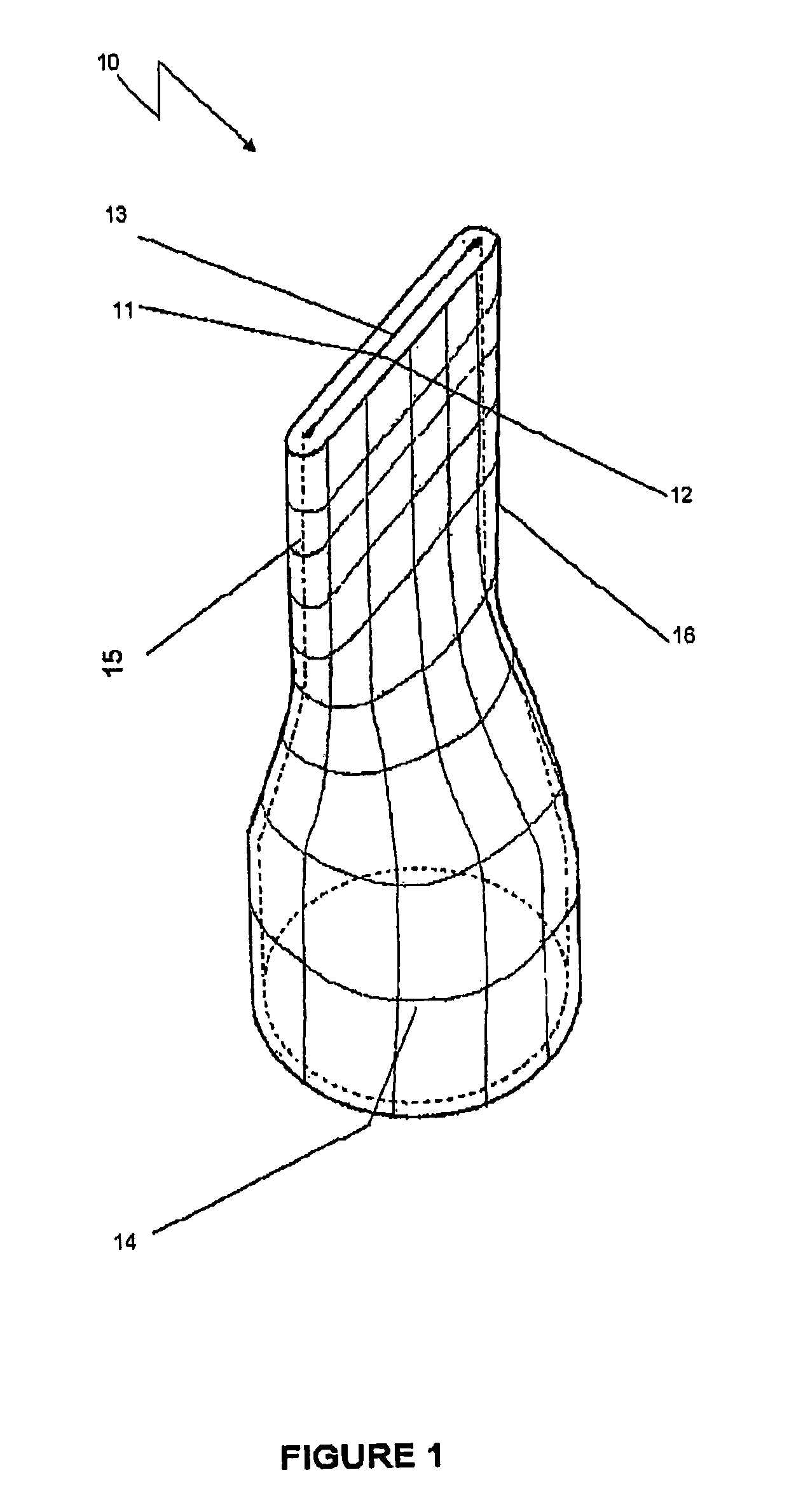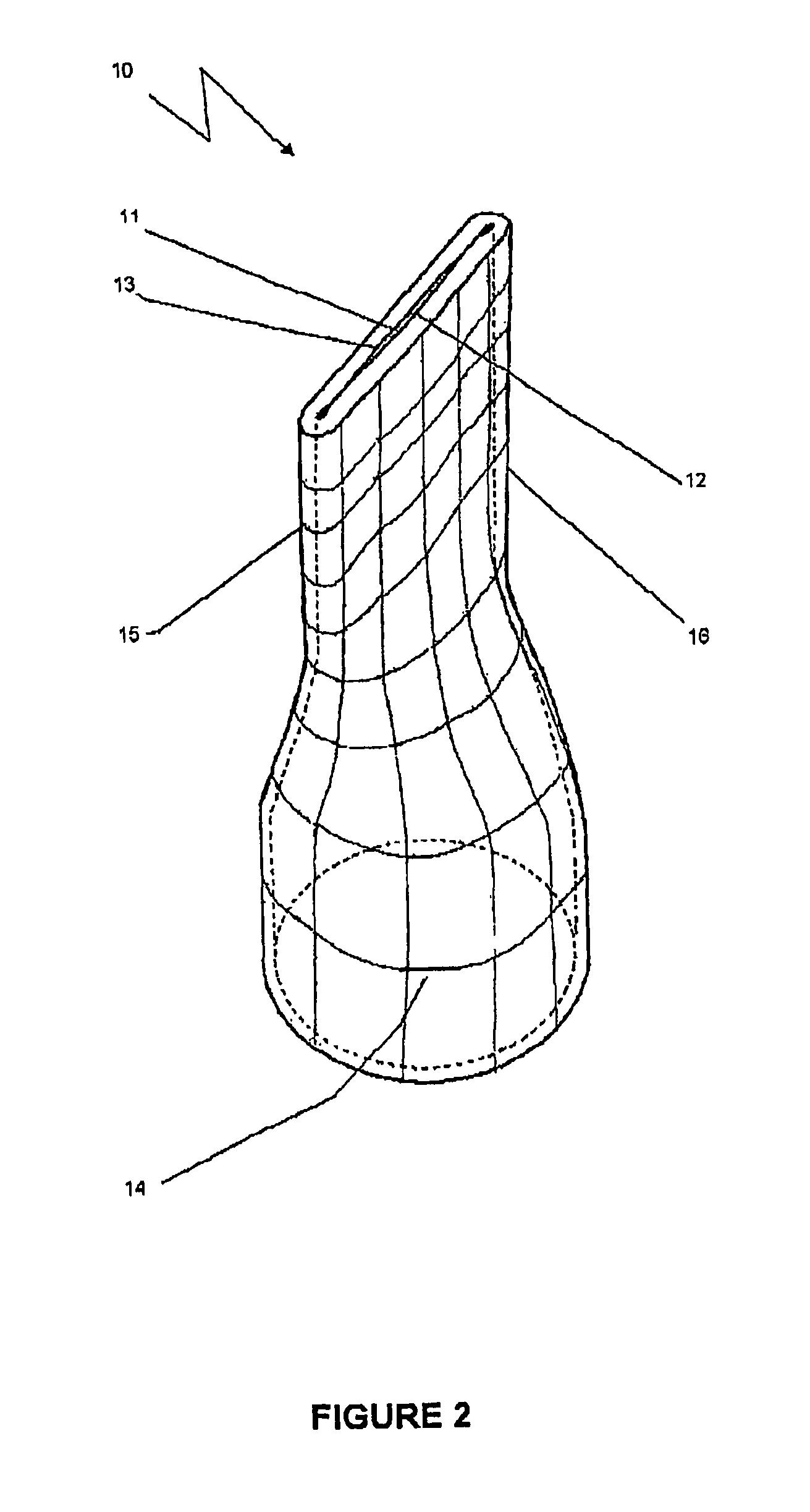Duckbill type check valve with curved and resiliently biased closing seal
a resilient bias and check valve technology, applied in the field of duckbill valves and check valves, can solve the problems of insufficient back pressure on the valves to fully close the valve, loose seals, and ineffective seals over time,
- Summary
- Abstract
- Description
- Claims
- Application Information
AI Technical Summary
Benefits of technology
Problems solved by technology
Method used
Image
Examples
Embodiment Construction
[0031]Preferred embodiments of the invention will now be described, by way of examples only, with reference to the accompanying drawings in which:
[0032]FIG. 1 shows a view of the flexible parts of a closed duck beak check valve 10 with an outlet 13 and an inlet 14. It has the form of a tube flattened towards its outlet end. First and second inner surfaces 11 and 12 are flat and meet to form the valve seal. Each side 15 and 16 of the flattened tube is rounded and biased to sustain the flattened shape in its relaxed state as shown.
[0033]FIG. 2 shows the duck-beak check valve of FIG. 1 with the inner surfaces 11 and 12 slightly separated at the outlet. FIG. 2 illustrates what happens after a period in service when the downstream (or back) pressure on the valve is inadequate to fully close the valve. Like numerals indicate features in common with FIG. 1.
[0034]FIG. 3 shows an end view of a duck beak check valve 20 in accordance with an embodiment of the invention in which like numerals i...
PUM
 Login to View More
Login to View More Abstract
Description
Claims
Application Information
 Login to View More
Login to View More - R&D
- Intellectual Property
- Life Sciences
- Materials
- Tech Scout
- Unparalleled Data Quality
- Higher Quality Content
- 60% Fewer Hallucinations
Browse by: Latest US Patents, China's latest patents, Technical Efficacy Thesaurus, Application Domain, Technology Topic, Popular Technical Reports.
© 2025 PatSnap. All rights reserved.Legal|Privacy policy|Modern Slavery Act Transparency Statement|Sitemap|About US| Contact US: help@patsnap.com



